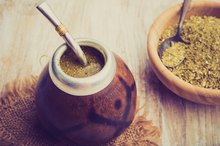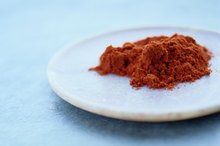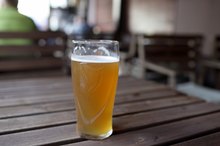Alcohol-Free Beer Effects on Cirrhosis of the Liver
The name "alcohol-free," or "nonalcoholic," beer is misleading because "alcohol-free" beer is, in fact, not absent of alcohol. Ethyl alcohol, otherwise known as ethanol, is present in both alcoholic and "alcohol-free" beer. One twelve ounce alcoholic beer contains 5 percent ethanol and one twelve ounce non-alcoholic beer contains 0.5 percent ethanol 1. While the amount of ethanol in "non-alcoholic" beer is significantly lower than that contained in regular beer, tests have shown that the ethanol in "non-alcoholic" beer can still be detrimental to patients who suffer from cirrhosis of the liver.
Identification
Cirrhosis is a disease of the liver which results in physical scarring, preventing the organ from being able to repair and regenerate healthy tissue. The most common forms of liver disease which lead to cirrhosis are those which result from alcoholism and Hepatitis C. Alcoholic and chronic hepatitis C both cause the continuous damage to the liver which leads to the scarring and irreparable damage that constitutes cirrhosis.
Significance
Possible Causes for Elevated Liver Enzymes & an Upset Stomach
Learn More
Approximately 80 to 90 percent of ethanol is biologically transformed in the liver. The effects of ethanol’s high rate of conversion in the liver, and the perpetuated damage caused by its consumption, were revealed in a study published by the University of Pittsburgh Medical Center (UPMC). The UPMC study concluded that even a minimal consumption of ethanol, specifically in the case of "non-alcoholic" beer, can impair patients with cirrhosis.
- Approximately 80 to 90 percent of ethanol is biologically transformed in the liver.
- The effects of ethanol’s high rate of conversion in the liver, and the perpetuated damage caused by its consumption, were revealed in a study published by the University of Pittsburgh Medical Center (UPMC).
Expert Insight
The UPMC researchers came to this conclusion based on their treatment of a 33-year-old cirrhosis patient with a 14 year history of abuse, and who had been consuming "non-alcoholic" beer throughout his treatment. During the first year of his diagnosis, the patient’s condition had dramatically deteriorated and he had informed physicians at the University of Pittsburgh Transplant Institute that his primary care physician had approved "non-alcoholic" beer as an acceptable alternative to regular beer. To rule out the potential of an alcoholic disguising his alcohol consumption, physicians confirmed the patient’s claim by calculating the ethanol in the quantity of "non-alcoholic" beers the patient had consumed the night before with the mg/dL blood volume recorded in his draw.
Function
Liver Health and Beer
Learn More
Because the damaged liver utilizes up to 80 percent of the body’s oxygen uptake in order to metabolize the ethanol, cirrhosis patients who continue to consume ethanol find that their liver will increase in size before it begins to shrink and, eventually, becomes inoperable. Such is the scenario with both the consumption of alcoholic and "non-alcoholic" beer. A study performed by the Texas Woman's University and published in a 1992 volume of "Alcohol," confirmed the effects of ethanol on the livers of newborns whose mothers consumed ethanol prior to and during their pregnancies. It revealed that the consumers of alcoholic and "non-alcoholic" beer, alike, gave birth to offspring with enlarged livers 2. The study relied on two separate groups of lab rats to voluntarily consume either regular or "non-alcoholic" beer provisions prior to mating and throughout gestation.
- Because the damaged liver utilizes up to 80 percent of the body’s oxygen uptake in order to metabolize the ethanol, cirrhosis patients who continue to consume ethanol find that their liver will increase in size before it begins to shrink and, eventually, becomes inoperable.
- A study performed by the Texas Woman's University and published in a 1992 volume of "Alcohol," confirmed the effects of ethanol on the livers of newborns whose mothers consumed ethanol prior to and during their pregnancies.
Prevention/Solution
Although the liver can no longer repair itself once cirrhosis has set in, the mortality rate of patients with the disease is greatly reduced by practicing complete abstinence from the ethanol contained in alcoholic and "non-alcoholi" beer.
Related Articles
References
- Journal of Clinical Forensic Medicine, "Elevated Blood Ethanol Levels Caused by Non-Alcoholic Beer"
- Alcohol, "The Effects of Alcoholic and Nonalcoholic Beer Drinking During Gestation: Offspring Growth and Glucose Metabolism"
- Toxicology, "a-Tocopherol, MDA-HNE and 8-OHdG Levels in Liver and Heart Mitochondria of Adriamycin-Treated Rats Fed with Alcohol-Free Beer"
- Stokes M, Abdijadid S. Disulfiram. In: StatPearls [Internet]. Treasure Island (FL): StatPearls Publishing. Updated July 10, 2020.
- Schaefer JM. On the potential health effects of consuming "non-alcoholic" or "de-alcoholized" beverages. Alcohol. 1987;4(2):87-95. doi: 10.1016/0741-8329(87)90004-8
- Rothstein E. Use of disulfiram (Antabuse) in alcoholism. The New England Journal of Medicine. 1970 Oct;283(17):936. doi:10.1056/nejm197010222831718
- Long CG, Cohen EM. Low alcohol beers and wines: attitudes of problem drinkers to their use and their effect on craving. Br J Addict. 1989;84(7):777-83. doi:10.1111/j.1360-0443.1989.tb03057.x
- Antabuse—(Diethylthiocarbamoyl Disulfide). New York State Office of Alcoholism and Substance Abuse Services.
- Smells May Trigger Alcohol Craving, and Relapse, Among Alcoholics. Addiction Technology Transfer Center Network.
Writer Bio
Dale Mann is a freelance writer who has been writing professionally since 2009. Mann has been published in "How to Think Like a Leader" by author Maria Berdusco, "The Pittsburgh Tribune-Review" and in the oral history production, "New Kensington Is..." He is a 2009 graduate of Pennsylvania State University with a Bachelor of Arts in journalism communications.









